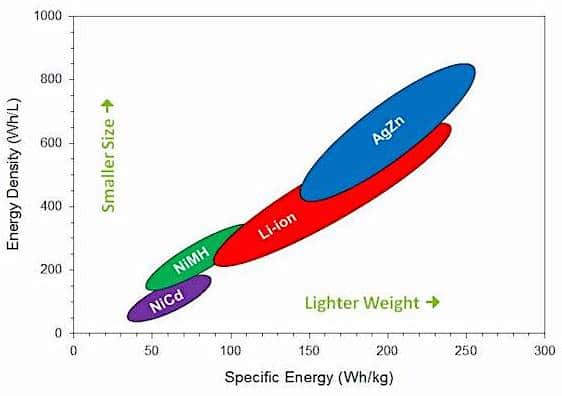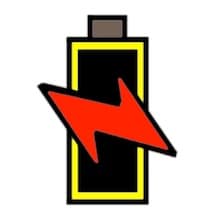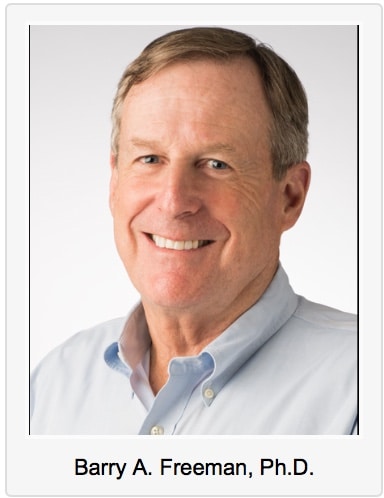Hearing aids (instruments) are entering a new era of rechargeable hearing aid batteries where consumers no longer have to deal with the hassles of replacement disposable batteries. Just follow recent industry product announcements:
- “Starkey offers rechargeable option thanks to ZPower”
- “Free yourself from the hassles of disposable batteries with Phonak Audéo™ B-R rechargeable hearing aid.”
- “Signia Cellion. The hearing aid that lasts a whole day on a single charge.”
- Unitron announces “Moxi Fit R, the world’s smallest rechargeable hearing instrument”
The industry has had other defining moments related to hearing aids with the shift from body aids to BTEs (behind-the-ear) in the 1970s; from BTEs to ITEs (in-the-ear) and CICs (completely-in-canal) in the 80s-90s; a transition from analog to digital products in the late 1990s; a return to BTE style RICs (receiver-in-canal) in mid-2000s; and, of course, the recent adoption of wireless streaming hearing aids which now account for 88% of U.S. hearing aid sales.
The industry appears to be positioned to witness a new trend of rechargeable hearing aids. Recent evidence suggests adoption of rechargeable products will be welcomed with open arms by consumers. When asked what compelling features consumers want in their hearing aids, the top answers were “a rechargeable hearing aid” and “rechargeable batteries” (MarkeTrak 9, 2015). In a recent survey of hearing aid users, 70% indicated they wanted “a rechargeable hearing aid over disposable batteries.” 1 This appears to be confirmed by a recent report of “the initial success of the [Phonak] rechargeable solution where it far exceeded expectations and accounted for 50% of Audéo sales.”2
Rechargeable hearing aids are not new. We know that companies like Siemens, Hansaton, and Persona have had rechargeable products available for more than a decade, and Dahlberg, Electone, and others, more than forty years ago. However, for many reasons, they were not widely adopted and disposable zinc-air batteries have continued to be the dominant power source for hearing aids. However, that now appears to be shifting as industry is taking a fresh look at rechargeable batteries (Figure 1).

Figure 1. This provides an overview of various chemistries used in rechargeable hearing aid batteries. While zinc-air disposable batteries have offered an excellent high energy density battery, they are not rechargeable and an estimated 1.6 billion go to landfills every year. Nickel Metal Hydride (NiMH) is rechargeable and has had diverse uses ranging from the Toyota Prius to previous generations of hearing aids. However, NiMH has a relatively short operating time, especially with the new generation of digital wireless streaming hearing aids, and it has cycle limitations requiring replacement after an estimated 300 charges. (Courtesy of ZPower).
Lithium-Ion (Li-ion)
Lithium-Ion (Li-ion) batteries are widely used in consumer electronics, but recent recognition of their potential danger from toxicity and flammability are raising questions about their adoption for small products like hearing aids.3,4 Li-ion batteries have voltages approaching 3.6V as compared to zinc-air which is 1.2-1.4V, and it is also difficult to scale down the size of Li-ion to fit into hearing aids. The smallest Li-ion size for hearing aids is a battery slightly larger than a traditional hearing aid #13 battery. There also are shipping restrictions requiring special packaging and shipping labels.5 Due to these concerns, Li-ion batteries must be sealed in the hearing aid case and extensively wrapped to protect the user from leakage, flammability, and ingestion.
Silver-zinc (AgZn)
Silver-zinc (AgZn) batteries have been widely used in space craft, satellites, and by the military due to their high energy density, especially in small sizes. They feature safety associated with their chemistry (which is non-toxic and non-flammable), along with their ability to be fully recycled. Figure 2 shows a comparison of energy density by battery and chemistry. While battery size is not shown, because the AgZn has a higher energy density, it allows for a smaller size.

Figure 2. Comparison of energy density of AgZn, Li-ion, NiMH, and NiCad rechargeable batteries. Because the AgZn has the highest energy when compared to other battery chemistries like Lithium-ion and Nickel Metal Hydride, the AgZn allows for a smaller battery size.
During the past year, this column has presented a series of articles on batteries6,7,8,9,10,11,12,13,14,15,16,17,18. It was learned, for example, that a battery is not just defined by its chemistry and size, but also by its capacity. Capacity represents the energy measured in ampere-hours (Ah) in a cell. It partially determines the run-time of the device it is powering.19 Consider this equivalent to the capacity of the fuel tank in an automobile. How many gallons of gas does a car’s fuel tank hold? This is the capacity of the gas tank measured in gallons. From the articles, it was also learned that not all batteries are the same. For example, with #312 size zinc-air batteries, it was reported that some may have 180 mAh capacity while others may provide substantially less capacity. Just because batteries are the same size (e.g., 312), does not mean they have the same capacity.
Additionally, battery life is dependent also on the current drain of the hearing aid. Staying with the automobile analogy, some cars get better gas mileage than others and some drivers may have better gas-saving driving behaviors than others. Similarly, hearing aids have different current drains which are measured in milliamps (mA). Hearing aids with multiple features activated, such as feedback and noise management will drain more current from the battery than hearing aids without those features. Hearing aids streaming music or a phone call with 2.4 gHz will use more battery capacity than hearing aids using NFMI (Near-Field Magnetic Induction) and an intermediary device which has its own power source as depicted in Figure 3.
It is clear that the batteries in the hearing aids represented in Figure 3 as Product C and Product D will last longer than those in Products A and B because they pull less current drain. However, remember that Products C and D, because of their design to utilize conventional hearing aid zinc-air batteries, require an additional intermediary device that has its own power source, so streaming life may be more dependent on the battery life of the intermediary device than the hearing aid.
A next post will continue this discussion, but will concentrate on rechargeable batteries in hearing aids.
References
- Hearing Tracker. (2016). Rechargeable hearing aid preferences: survey findings. Posted August 9th. https://www.hearingtracker.com/blog/rechargeable-hearing-aid-preferences/
- Gola, M and Wieprecht, M. “Hearing aids: A sound route for growth in 2017.” Mainfirst Bank AG, January 2017.
- Sharpe, S., Rochette, , and Smith, G. Pediatric Battery-Related Emergency Visits. Pediatrics, Volume 129, Number 6, June 2012
- Samsung Report (2017). http://www.anandtech.com/show/11060/samsung-reveals-root-cause-of-galaxy-note7-battery-fires).
- S. Department of Transportation, “New standards to improve safety of lithium battery transportation.” https://www.transportation.gov/briefing-room/us-department-transportation-issues-new-standards-improve-safety-lithium-battery, 2016.
- Staab, W. My battery doesn’t seem to last long, what could be happening? Hearing Health and Technology Matters. January 2016. https://hearinghealthmatters.org/waynesworld/2016/my-hearing-aid-battery-doesnt-last-long/.
- Staab, W. Hearing aid battery life can vary widely. Hearing Health and Technology Matters, February 23, 2016. https://hearinghealthmatters.org/waynesworld/2016/hearing-aid-battery-life-can-vary-widely/
- Freeman, B. A. Battery life counseling – with consideration of rechargeable batteries. Hearing Health and Technology Matters, March 1, 2016. https://hearinghealthmatters.org/waynesworld/2016/batterylifecounseling/.
- Staab, W.J. Hearing aid battery life is not easy to predict. Hearing Health and Technology Matters, February 23, 2016. https://hearinghealthmatters.org/waynesworld/2016/hearing-aid-battery-life-can-vary-widely/.
- Staab, W.J. My hearing aid battery life is longevity challenged! Hearing Health and Technology Matters, February 16, 2016. https://hearinghealthmatters.org/waynesworld/2016/is-your-hearing-aid-battery-longevity-challenged/.
- Staab, W.J. Why are there holes in my hearing aid battery? Hearing Health and Technology Matters, March 15, 2016. https://hearinghealthmatters.org/waynesworld/2016/holes-hearing-aid-battery/.
- Staab, W.J. Hearing aid battery – where are we? Hearing Health and Technology Matters. December 27, 2016. https://hearinghealthmatters.org/waynesworld/2016/hearing-aid-batteries/.
- Staab, W.J. Hearing aid fuel cells? Hearing Health and Technology Matters, January 3, 2017. https://hearinghealthmatters.org/waynesworld/2017/fuel-cells-for-hearing-aids/.
- Filips, G. Rechargeable batteries and hearing aids are a natural fit. Hearing Health and Technology Matters, April 25, 2012. https://hearinghealthmatters.org/hearingviews/2012/rechargeable-batteries-and-hearing-aids-are-a-natural-fit/.
- Schweitzer, H.C. Are you ready for the next major disruption? Rechargeable hearing aids. Hearing Health and Technology Matters, February 17, 2015. https://hearinghealthmatters.org/waynesworld/2015/ready-next-major-disruption-rechargeable-hearing-aids/.
- Hannan, G. What I didn’t know about hearing aid batteries. Hearing Health and Technology Matters. May 8, 2012. https://hearinghealthmatters.org/betterhearingconsumer/2012/what-i-didnt-know-about-hearing-aid-batteries/.
- Klop, L. Hearing aid battery dangers. Hearing Health and Technology Matters, April 19, 2016. https://hearinghealthmatters.org/hearingandkids/2016/hearing-aid-battery-dangers/.
- Van der Ent, L. Market trends: the charge of recharge. Hearing Health and Technology Matters, November 29, 2016. https://hearinghealthmatters.org/hearinprivatepractice/2016/rechargeable-hearing-aid-batteries/.
- Buchmann, I. Batteries in a portable world: A handbook on rechargeable batteries for non-engineers. Cadex, 2016.
- Freeman, B., Powers, T., Perez, J. Battery Life: Counseling patients about the power consumption of wireless streaming hearing aids. Presentation at Annual Conference of the American Academy of Audiology, Phoenix (2016).
*Barry A. Freeman, Ph.D. is Vice President, Business Development of ZPower Battery, LLC. He is a past-president of the American Academy of Audiology and served on the Academy’s Board of Directors for six years. He received the Distinguished Achievement Award from the American Academy of Audiology in 2006.









